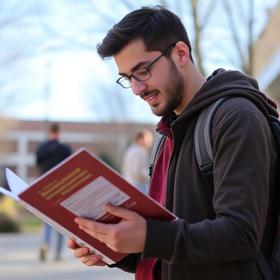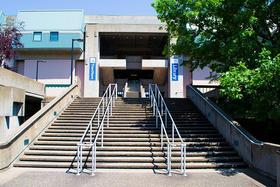- Butler County Community College is dedicated to providing affordable and accessible education, training, and cultural enrichment opportunities responsive to the needs of the community. The college is committed to fostering a supportive environment that values integrity, diversity, and excellence.
School Highlights
Butler County Community College serves 3,396 students (36% of students are full-time).
The college's student-teacher ratio of 10:1 is lower than the state community college average of 15:1.
Minority enrollment is 13% of the student body (majority Black and Hispanic), which is less than the state average of 48%.
Quick Facts (2025-26)
- Enrollment: 3,396 students
- In-state tuition: $6,690
- Out-state tuition: $9,570
- Student-teacher ratio: 10:1
- Minority enrollment: 13%
- Source: Integrated Postsecondary Education Data System (IPEDS)
Top Rankings
Butler County Community College ranks among the top 20% of public schools in Pennsylvania for:
Category
Attribute
Affordability
Community Size
Debt For Students
School Overview
The teacher population of 342 teachers has stayed relatively flat over five years.
Butler County Community College
(PA) Community College Avg.
Carnegie Classification
Associate's Colleges: Mixed Transfer/Career & Technical-High Traditional
Not applicable, not in Carnegie universe (not accredited or nondegree-granting)
Institution Level
At least 2 but less than 4 years
At least 2 but less than 4 years
Institution Control
Public
Private not-for-profit
Total Faculty
342 staff
59 staff
School Calendar
Student Body
The student population of Butler County Community College has grown by 6% over five years.
The student-teacher ratio of 10:1 has increased from 9:1 over five years.
The Butler County Community College diversity score of 0.24 is less than the state average of 0.68. The school's diversity has declined by 37% over five years.
Total Enrollment
3,396 students
461 students
Student-Teacher Ratio
10:1
15:1
# Full-Time Students
1,207 students
325 students
# Part-Time Students
2,189 students
136 students
# Enrollment Undergraduate
339 students
298 students
# Full-Time Undergraduate Students
1,207 students
326 students
# Full-Time Graduate Students
n/a
10 students
# Part-Time Undergraduate Students
2,189 students
151 students
# Part-Time Graduate Students
n/a
12 students
Total Dormitory Capacity
n/a
330 students
% American Indian/Alaskan
n/a
n/a
% Asian
1%
5%
% Hispanic
3%
11%
% Black
3%
15%
% White
87%
52%
% Hawaiian
n/a
3%
% Two or more races
3%
3%
% Non Resident races
n/a
1%
% Unknown races
3%
10%
Diversity Score
0.24
0.68
College Completion Rate (Students who graduate in less than 4 years)
31%
60%
College Completion Rate (Students who graduate in 4 years or more than 4 years)
n/a
36%
Average Graduate Earnings (10 Years)
$33,800
$34,900
Tuition and Acceptance Rate
The public in-state tuition of $6,690 is less than the state average of $11,723. The in-state tuition has declined by 18% over four years.
The public out-state tuition of $9,570 is less than the state average of $15,818. The out-state tuition has declined by 14% over four years.
In-State Tuition Fees
$6,690
$11,723
Out-State Tuition Fees
$9,570
$15,818
Tuition Notes
$5,610 for Butler County residents; $8,700 for out-of-county residents
% Students Receiving Some Financial Aid
94%
88%
Median Debt for Graduates
$10,000
$13,000
Median Debt for Dropouts
$4,972
$6,260
Acceptance Rate
n/a
78%
SAT Reading
n/a
460
SAT Math
n/a
470
SAT Writing
n/a
435
ACT Composite
n/a
20
ACT English
n/a
20
ACT Math
n/a
21
ACT Writing
n/a
7
Source: 2024 (or latest year available) Integrated Postsecondary Education Data System (IPEDS) , School Administrators
School Notes
- The BC3 main campus is located 1½ miles south of the city of Butler, on 323 acres of the former Oak Hills Golf Course. The beautiful campus in a country setting, surrounded by large oak trees and rolling hills, provides a comfortable and safe learning environment. Approximately 4,000 credit students attend BC3 annually and are enrolled in over 60 degree programs in the areas of business, nursing and allied health, arts and education, technology and transfer. One-third of the students earn a two-year Associates Degree and then transfer to a four-year college or university. Many students attend both day and evening classes, on a full or part-time basis. BC3 offers over 75 distance learning courses via the Internet or by videotape. In addition to offering the traditional career and transfer programs, BC3 has been recognized for several unique credit programs including computer forensics, metrology, nanofabrication, and massage therapy. Butler County Community College also offers classes at various off-campus centers throughout Western Pennsylvania at Cranberry Center, Lawrence County Center and Center at the LindenPointe. Butler County Community College is accredited by the Middle States Commission On Higher Education.
- Sample of notable school alumni/alumnae:
- William Miller - Influential in various roles at BC3; Developed and coached the BC3 Men’s Golf Team. -
- Jeff Geibel - Financial Advisor and community leader; Recipient of various service awards. -
Frequently Asked Questions
How much does Butler County Community College cost?
Butler County Community College's tuition is approximately $6,690 for In-State students and $9,570 for Out-State students.
Who are famous alumni from Butler County Community College?
Butler County Community College famous alumni include: William Miller - Influential in various roles at BC3; Developed and coached the BC3 Men’s Golf Team. and Jeff Geibel - Financial Advisor and community leader; Recipient of various service awards..
What is Butler County Community College's ranking?
Butler County Community College ranks among the top 20% of community college in Pennsylvania for: Least expensive tuition, Largest student body and Least debt for graduating students.
Recent Articles

How to Transfer from Community College to a Four-Year University in 2025
A step-by-step guide for community college students transferring to a four-year university in 2025 — updated strategies, data and expert insights.

Scholarships for Community College Students 2025
Explore updated scholarship programs, tuition data, and expert strategies for community college students in 2025.

The Rise of Technical and Vocational Training in 2025
Explore the 2025 surge in technical and vocational training—enrollment, policy, costs, and why this path is gaining ground for students and parents.









